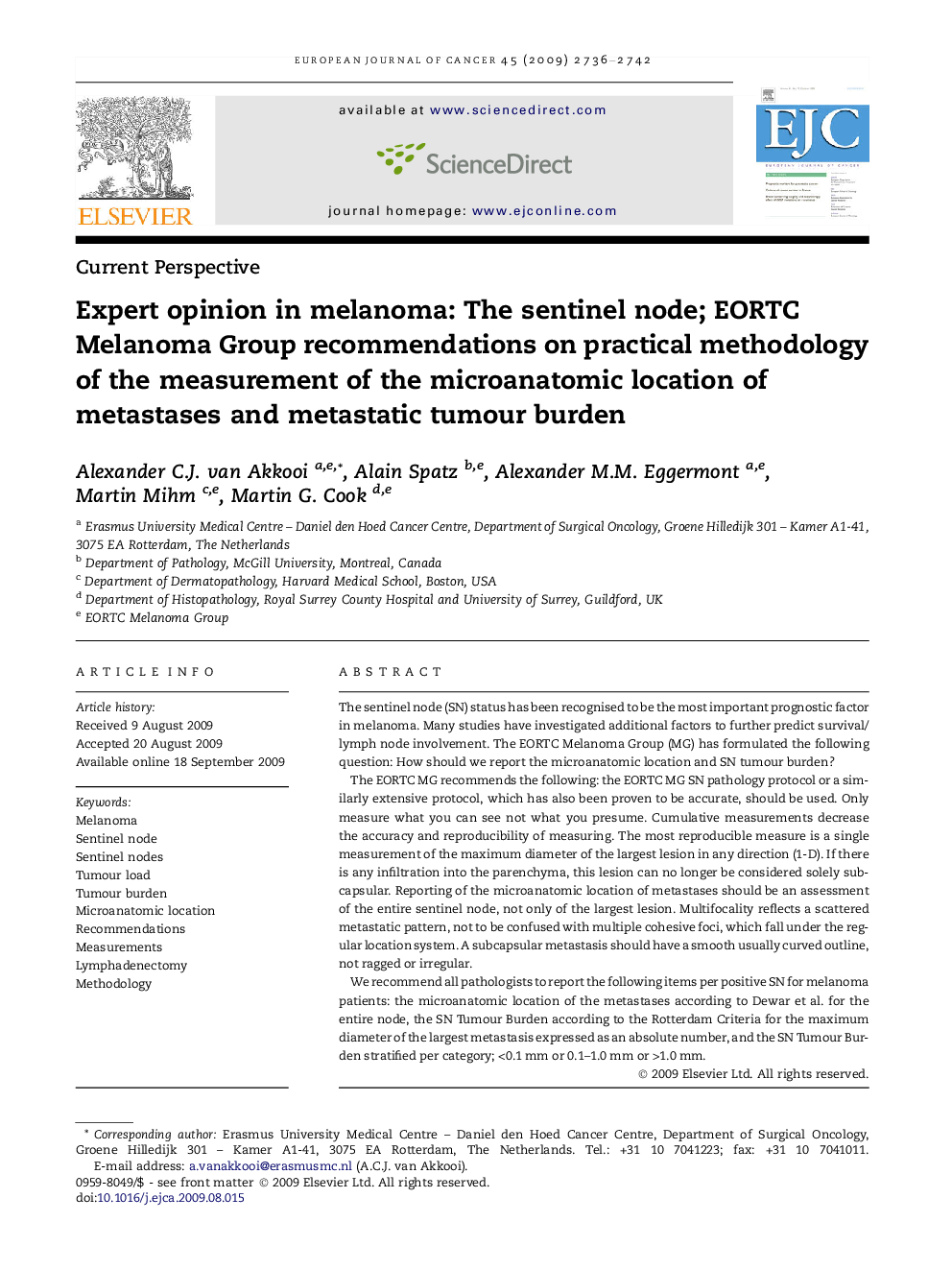| Article ID | Journal | Published Year | Pages | File Type |
|---|---|---|---|---|
| 2123585 | European Journal of Cancer | 2009 | 7 Pages |
The sentinel node (SN) status has been recognised to be the most important prognostic factor in melanoma. Many studies have investigated additional factors to further predict survival/lymph node involvement. The EORTC Melanoma Group (MG) has formulated the following question: How should we report the microanatomic location and SN tumour burden?The EORTC MG recommends the following: the EORTC MG SN pathology protocol or a similarly extensive protocol, which has also been proven to be accurate, should be used. Only measure what you can see not what you presume. Cumulative measurements decrease the accuracy and reproducibility of measuring. The most reproducible measure is a single measurement of the maximum diameter of the largest lesion in any direction (1-D). If there is any infiltration into the parenchyma, this lesion can no longer be considered solely subcapsular. Reporting of the microanatomic location of metastases should be an assessment of the entire sentinel node, not only of the largest lesion. Multifocality reflects a scattered metastatic pattern, not to be confused with multiple cohesive foci, which fall under the regular location system. A subcapsular metastasis should have a smooth usually curved outline, not ragged or irregular.We recommend all pathologists to report the following items per positive SN for melanoma patients: the microanatomic location of the metastases according to Dewar et al. for the entire node, the SN Tumour Burden according to the Rotterdam Criteria for the maximum diameter of the largest metastasis expressed as an absolute number, and the SN Tumour Burden stratified per category; <0.1 mm or 0.1–1.0 mm or >1.0 mm.
